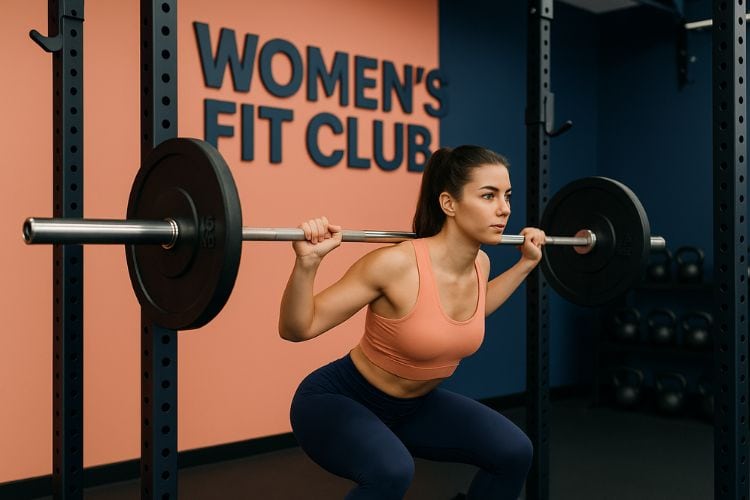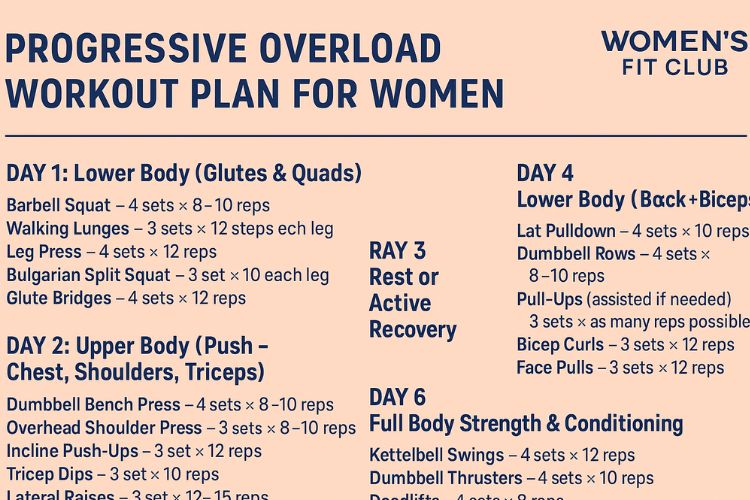Sign up for workout ideas, training advice, reviews of the latest gear and more.






Progressive overload is one of the most effective principles in strength training, yet many women overlook its importance. If you’ve been working out for months and feel stuck in a plateau—lifting the same weights, performing the same number of reps, and seeing little progress—it’s likely because you aren’t applying progressive overload effectively. This guide will break down everything you need to know about progressive overload, why it’s crucial for women’s fitness goals, and provide you with a structured progressive overload workout plan designed for women.
Progressive overload is a training principle that involves gradually increasing stress on the muscles over time. This can be done by lifting heavier weights, increasing repetitions, improving form, or adjusting rest times. By consistently challenging your muscles, you encourage growth, strength development, and overall physical improvement.
Many women worry about getting “too bulky” from lifting weights, but progressive overload is not about extreme bodybuilding—it’s about building lean muscle, toning, and improving strength. Women often benefit even more than men from progressive overload because it helps:
Progressive overload ensures muscles are constantly adapting, leading to toned and sculpted physiques.
As muscle mass increases, your body naturally burns more calories, even at rest. This helps women maintain a healthy weight and burn fat more efficiently.
Unlike crash workout programs, progressive overload focuses on gradual improvement, making it sustainable for years.
By carefully increasing loads instead of overtraining, you strengthen joints and connective tissues.
Lifting heavier weights over time is empowering—women often find it translates to more confidence in everyday life.
There are several ways to implement progressive overload. Women don’t always need to lift “heavy” weights from the start; consistency and gradual increases matter most.
The most common method is adding small increments of weight each week. For example, moving from 10 lb dumbbells to 12 lb.
If you’re comfortable with a set of 10 reps, push to 12–15 before moving up in weight.
Slowing down exercises (eccentric training) increases time under tension, making muscles work harder.
Instead of 3 sets, move to 4. This increases total workout volume.
Challenging your endurance while lifting can make muscles adapt faster.

This plan is designed for women of beginner to intermediate levels. The focus is on compound lifts, accessory movements, and gradual progress.
Progression Tip: Increase squat weight by 2–5 lbs weekly.
Progression Tip: Once you can complete 12 reps easily, increase dumbbell weight.
Progression Tip: Add resistance bands for donkey kicks once bodyweight feels easy.
Progression Tip: Use a thinner resistance band for assisted pull-ups each week.
Progression Tip: Reduce rest between sets from 90 seconds to 60 seconds over time.
Training without proper nutrition slows progress. Women should focus on:
Keeping a workout journal or using a fitness app is crucial. Track:
This allows you to see improvements and know when to push harder.
Here’s a month-long approach to see real results:
Recovery is just as important as training. Women should prioritize:
For women over 40, progressive overload is still highly effective but requires extra focus on joint health and recovery. Lighter weights with higher reps, resistance bands, and mobility exercises should be integrated for longevity.
Progressive overload is not about lifting the heaviest weight possible—it’s about getting stronger, leaner, and healthier over time. With a structured plan, proper nutrition, and consistent effort, women can transform their strength, metabolism, and confidence.
Whether your goal is to build lean muscle, lose fat, or simply feel stronger in daily life, progressive overload is the foundation for lasting results.
Stay up to date on the latest women’s health, fitness and lifestyle trends and tips.